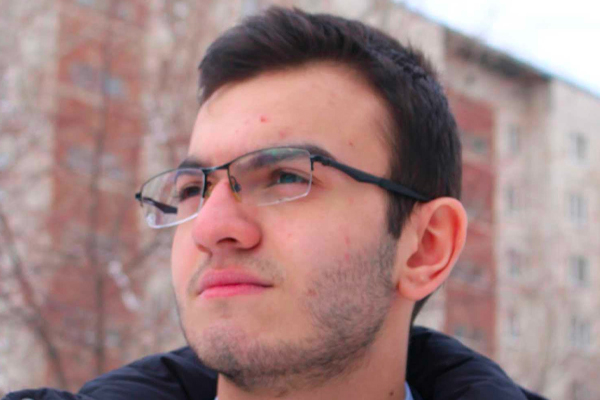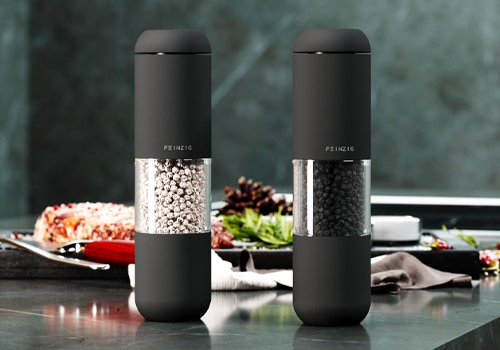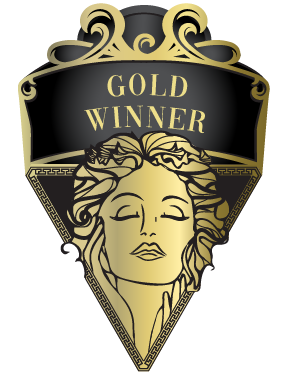
Interview
Anar Nasirov
1 Please give us a brief bio of yourself and your design background.
My name is Anar Nasirov, and I am a final-year student at the engineering faculty. Since early childhood, I've had a passion for creating something new because I've always wanted to stand out and not be like everyone else. About a year ago, I started getting into design, which has become a new avenue for my creativity. In addition to this, I have been involved in frontend development for the past 1-2 years. My engineering background gives me a unique perspective on design, allowing me to merge technical precision with aesthetic beauty. With each new project, I aim to expand my horizons and apply my acquired knowledge to solve complex challenges.
2 What made you become/why did you choose to become a designer/artist?
The inclination to delve into design came from my longstanding passion for creativity and originality. I've always had the urge to break away from the norm, leading me to explore various fields. About a year ago, I found that design allowed me to combine my engineering background and technical skills in frontend development and programming with my creative aspirations. Whether I'm coding or designing, I strive to solve problems with a distinctive flair, aiming for both functionality and aesthetic elegance. This fusion of technical acumen and artistic sensibility is what initially attracted me to the design field and continues to motivate me in every new project.
3 Tell us more about your business/company, job profile, and what you do.
I work as a designer at Feinzig, a company that focuses not only on creating aesthetically pleasing and functional products but also aims to address broader societal issues. One of the challenges I'm particularly passionate about solving is reducing CO2 emissions. My role involves researching and implementing more eco-friendly development practices, as well as designing products that are both sustainable and efficient. My engineering background equips me with the technical skills needed to approach these challenges with a multidisciplinary perspective. Whether I'm working on the design aspects or the technical elements, my goal is to come up with innovative solutions that are beneficial for both the user and the environment.
4 What does “design” mean to you?
To me, "design" is a multidimensional concept that goes beyond mere aesthetics or visual appeal. It's a potent blend of form and function, serving as a bridge between the technical and the artistic. Design is about solving problems, both seen and unseen, to improve user experiences, enhance usability, and contribute to a better, more sustainable world. In my work at Feinzig, I see design as a tool to address broader societal challenges, such as reducing CO2 emissions, by creating products that are not just visually pleasing, but also ecologically responsible. Thus, design becomes a form of expression, a way to impart values, and a method for driving positive change.
5 What’s your favorite kind of design and why?
My favorite kind of design is sustainable design, which merges aesthetic value with environmental responsibility. I find this approach to be incredibly fulfilling both as a designer and as a citizen of the world. The goal is not just to create something beautiful, but also to make a lasting, positive impact on society and the environment. In my work at Feinzig, I get the chance to delve into sustainable design by researching eco-friendly materials and methods, thereby contributing to the reduction of CO2 emissions. This aligns perfectly with my broader goal of leveraging design as a tool for solving critical issues and making the world a better place.
6 To you, what makes a “good” design?
To me, a "good" design is one that successfully merges form and function while also considering the broader implications of its existence. It should be visually appealing, but more importantly, it should serve its intended purpose efficiently and effectively. A good design anticipates the user's needs and preferences, making the user experience as seamless as possible. Moreover, in line with my passion for sustainability, I believe that a good design should also be environmentally responsible. It should minimize waste and the use of non-renewable resources, thereby contributing to a more sustainable future. In summary, a good design is holistic, meeting not only aesthetic and functional criteria but also ethical and environmental ones.
7 Describe your design style and its main characteristics.
My design style can be best described as "functional elegance with a sustainable focus." The primary characteristics include a clean, minimalist aesthetic, where every element serves a purpose and nothing is superfluous. This not only enhances usability but also minimizes waste, aligning with my commitment to sustainability. My engineering background allows me to infuse technical precision into my designs, ensuring they are not just beautiful, but also highly functional and efficient. I frequently incorporate eco-friendly materials and methodologies into my work, always striving for solutions that are both innovative and responsible.
8 Tell us about your design process.
My design process begins with in-depth research to understand the problem space and user needs. I then move to ideation, sketching out concepts and brainstorming approaches, with sustainability always in mind. Next comes prototyping, using my engineering skills to create functional models. These prototypes undergo testing based on user feedback and technical feasibility. Finally, the design is implemented with meticulous attention to detail. Throughout this process, I consistently prioritize sustainability, ensuring my designs are not just functional and beautiful, but also environmentally responsible.
9 Do you think your country and its cultural heritage has an impact on your design process?
Absolutely, the cultural heritage of my country deeply influences my design process. The values, norms, and historical context offer a rich tapestry from which I can draw inspiration. For instance, the tradition of craftsmanship in my culture instills in me a respect for quality and attention to detail, which are key components of my designs. The communal values also make me more attuned to designing with inclusivity and accessibility in mind, ensuring that my creations can be appreciated by a broad audience. Moreover, the natural beauty of my homeland inspires me to incorporate sustainability into my work, as a way to preserve the environment for future generations.
10 Congratulations! As the winner of the 2023 MUSE Design Awards, what does it mean to you and your company and team to receive this award distinction?
Winning the 2023 MUSE Design Awards is an incredible honor and a significant milestone for both me and my team. It serves as an external validation of the hard work, creativity, and dedication we've invested in our projects. This accolade not only boosts our credibility in the industry but also provides us with a platform to showcase our commitment to design excellence and sustainability. For me personally, the award is a fulfillment of the vision I've had for blending functional elegance with environmental responsibility. It reaffirms that a focus on sustainability does not have to come at the expense of aesthetic or functional quality, and vice versa.
11 Can you explain a bit about the winning work you entered into the 2023 MUSE Design Awards, and why you chose to enter this project?
Certainly! The project we submitted to the 2023 MUSE Design Awards was a set of salt and pepper grinders. These aren't just ordinary grinders; they're crafted from sustainably sourced materials and designed for durability as well as aesthetics. We entered this particular project because it epitomizes our commitment to blending functionality, design excellence, and environmental responsibility.
12 What was the biggest challenge with this project?
The biggest challenge with our salt and pepper grinders was balancing aesthetics, functionality, and sustainability within a seemingly simple product. The use of sustainably sourced materials posed some limitations in terms of durability and cost. Additionally, we aimed to make the product intuitive and easy to use, while still achieving a design that was both modern and timeless. Figuring out how to incorporate all these elements into a small, everyday item required multiple iterations and extensive testing. It pushed us to think critically about every design decision, but ultimately, it also made the success of the project that much more rewarding.
13 How has winning an Award developed your practice/career?
Winning an award like the MUSE Design Awards has been a significant milestone for us. It not only validates the quality and innovation of our work but also significantly boosts our visibility in the design community. The recognition has opened doors for new collaborations and projects, allowing us to expand our portfolio and reach a wider audience. Additionally, the award serves as an endorsement that helps build trust with clients and partners.
14 What are your top three (3) favorite things about our industry?
1. Creativity: The ever-changing nature of design keeps the work exciting and pushes for constant innovation. 2. Problem-Solving: The challenge of turning concepts into functional and visually appealing solutions is incredibly rewarding. 3. Impact: The potential for design to improve lives, whether through sustainability or aesthetics, is deeply motivating.
15 What makes your country specifically, unique in the design industry?
The design industry in my country is unique for its rich cultural heritage, which often serves as a deep well of inspiration for designers. Traditional art forms, architecture, and even local crafts are frequently integrated into modern designs, creating a distinctive blend of the old and new. This cultural influence gives our design work a unique character that stands out in the global arena.
16 Where do you see the evolution of design industry going over the next 5-10 years?
In the next 5-10 years, I see the design industry evolving in three major ways: Tech Integration: Advanced technologies like AI and AR will become essential in design, reshaping how we create and market products. Sustainability: With growing environmental awareness, sustainable practices will become a norm, affecting materials and design longevity. User-Centric: Expect more personalized designs thanks to better data analytics and user experience research.
17 If you were a student entering this industry or an aspiring MUSE Design Awards submitter, what advice would you give them?
"Never stop learning, because life never stops teaching." Embrace a mindset of continuous learning and experimentation. Don't be afraid to try new things, take risks, and step outside your comfort zone. It's through these experiences that you'll grow as a designer and find your unique voice. Remember that challenges are opportunities in disguise, and with determination and a willingness to learn, you'll find your path to success.
18 What resources would you recommend to someone who wants to improve their skills in the design industry?
Practice, Practice and again practice. Practice is key to improvement. Work on personal projects, take on freelance work, or contribute to open-source projects to apply and refine your skills.
19 Tell us something you have never told anyone else.
-
20 Who has inspired you in your life and why?
Nature and mathematics are closely intertwined, even though they might seem different at first glance. This remarkable connection serves as a vivid example of harmony and order in the world, discoverable even in the most unexpected places. It affirms that mathematical principles are not merely abstract concepts but a key to understanding the reality that surrounds us. This can serve as a powerful source of inspiration for further research, scientific discoveries, and creative self-expression.
21 What is your key to success? Any parting words of wisdom?
Never stop learning, because life never stops teaching.
22 Which THREE (3) friends/peers would you nominate to participate in the next MUSE Design Awards?
-
23 Do you have anything else you would like to add to the interview?
Don't give up, you have a beautiful chance to leave something to people

